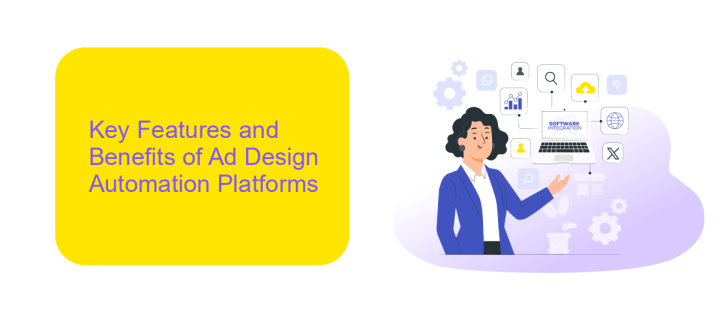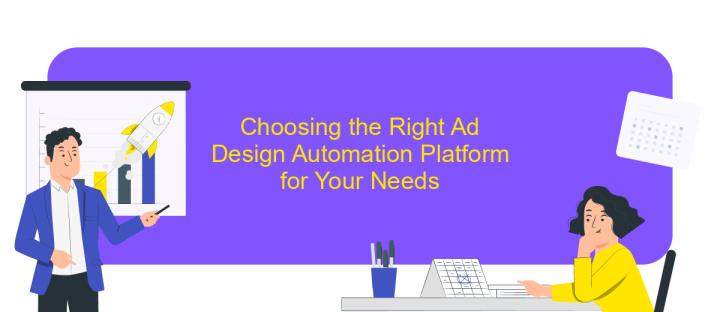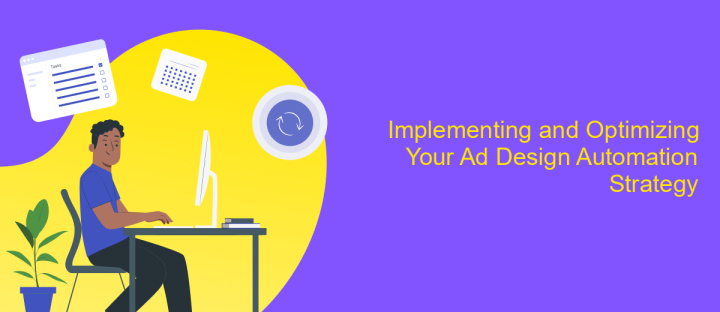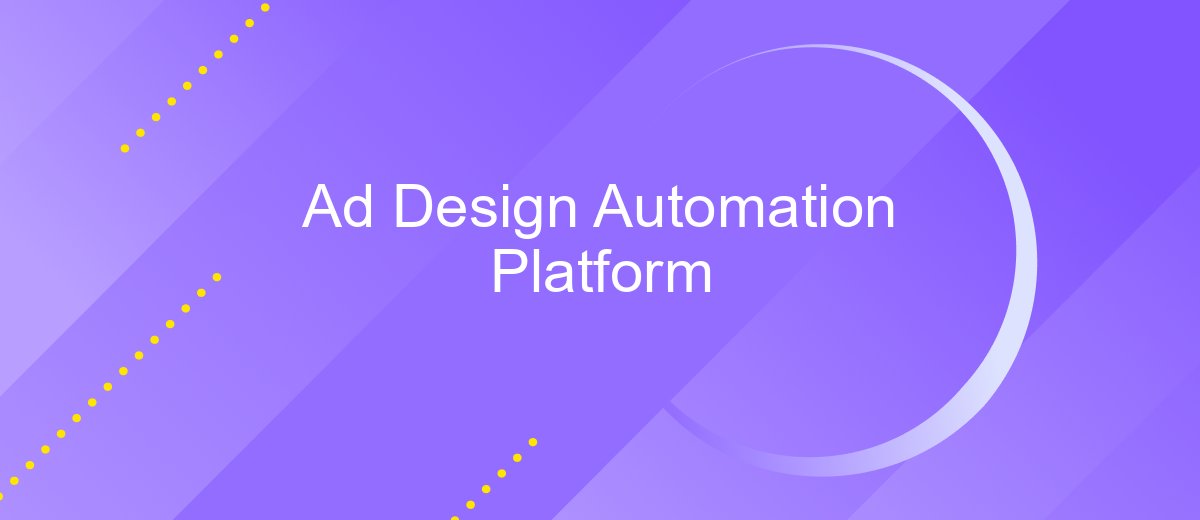Ad Design Automation Platform
In today's fast-paced digital landscape, creating compelling advertisements quickly and efficiently is crucial for businesses to stay competitive. The Ad Design Automation Platform revolutionizes the way companies approach ad creation, offering an intuitive and streamlined solution that automates the design process. By leveraging advanced algorithms and customizable templates, this platform empowers marketers to produce high-quality, engaging ads with minimal effort, saving time and resources while maximizing creative potential.
Introduction: The Rise of Ad Design Automation
In recent years, the landscape of advertising has undergone a significant transformation with the advent of ad design automation. This innovative approach leverages advanced technologies to streamline the creation of advertisements, making the process more efficient and effective. By automating various aspects of ad design, businesses can now produce high-quality ads at scale, reducing the time and resources traditionally required for manual design efforts.
- Enhanced creativity: Automation tools offer a plethora of design templates and elements, sparking creativity and enabling unique ad creations.
- Cost efficiency: By reducing the need for extensive manual labor, businesses can cut down on design costs significantly.
- Scalability: Automated platforms allow for the rapid production of multiple ad variations tailored to different audiences.
- Data-driven insights: These platforms often incorporate analytics, providing insights to optimize ad performance continuously.
As the digital marketing landscape becomes increasingly competitive, the rise of ad design automation represents a pivotal shift towards more agile and data-driven advertising strategies. By embracing these technologies, companies can not only enhance their creative output but also achieve better alignment with consumer preferences and market trends, ultimately driving greater engagement and conversion rates.
Key Features and Benefits of Ad Design Automation Platforms

Ad Design Automation Platforms streamline the creative process by offering intuitive tools that enable marketers to produce high-quality advertisements quickly and efficiently. These platforms typically feature drag-and-drop interfaces, customizable templates, and AI-driven design suggestions, allowing users to generate visually appealing ads without extensive design expertise. Additionally, they support multi-channel publishing, ensuring that ads are optimized for various platforms, from social media to display networks, enhancing reach and engagement.
Another key benefit is the seamless integration capabilities offered by these platforms. Services like ApiX-Drive enable users to connect their ad design tools with other marketing software, automating workflows and data synchronization. This integration ensures that ad campaigns are consistent and data-driven, as marketers can easily access analytics and insights from different sources. By automating repetitive tasks and providing real-time performance tracking, Ad Design Automation Platforms empower businesses to focus on strategy and creativity, ultimately leading to more effective and personalized advertising campaigns.
Choosing the Right Ad Design Automation Platform for Your Needs

When selecting an ad design automation platform, it's crucial to consider your specific needs and objectives. The right platform can significantly enhance your advertising efforts, saving time and resources while maximizing creativity and efficiency. Begin by assessing your current workflow and identifying areas where automation can make a meaningful impact.
- Evaluate the platform's features and capabilities, ensuring they align with your advertising goals. Look for customizable templates, AI-driven design suggestions, and integration with existing tools.
- Consider the ease of use and learning curve. A user-friendly interface can facilitate a smoother transition and quicker adoption by your team.
- Analyze pricing models and scalability options. Ensure the platform fits within your budget and can grow alongside your business needs.
Ultimately, choosing the right ad design automation platform involves balancing functionality, usability, and cost. By carefully considering these factors, you can select a solution that not only meets your current requirements but also supports future growth and innovation in your advertising strategies.
Implementing and Optimizing Your Ad Design Automation Strategy

Implementing an ad design automation strategy begins with a clear understanding of your marketing objectives and target audience. By identifying these key elements, you can tailor the automation tools to align with your specific goals. Start by selecting a platform that offers customizable templates and intuitive design features, ensuring it integrates seamlessly with your existing systems.
Once your platform is in place, focus on optimizing the workflow to maximize efficiency. This involves setting up automated processes for generating and testing ad variations, allowing for rapid iteration and improvement. Regularly analyze performance metrics to identify successful designs and refine underperforming ones.
- Define clear objectives and target audience.
- Select a compatible automation platform.
- Set up automated ad generation and testing.
- Regularly analyze and refine ad performance.
Continuous optimization is crucial for maintaining the effectiveness of your ad design strategy. Stay informed about industry trends and emerging technologies to enhance your approach. By fostering a culture of experimentation and learning, you can ensure your ad campaigns remain relevant and impactful in a constantly evolving digital landscape.
- Automate the work of an online store or landing
- Empower through integration
- Don't spend money on programmers and integrators
- Save time by automating routine tasks
The Future of Ad Design Automation and its Impact on Marketing
The future of ad design automation is poised to revolutionize the marketing landscape by providing businesses with more efficient, data-driven solutions. As artificial intelligence and machine learning technologies continue to advance, ad design platforms will become increasingly sophisticated, allowing for personalized and dynamic ad creation at scale. This will enable marketers to deliver highly targeted content that resonates with diverse audiences, ultimately driving higher engagement and conversion rates. The integration of automation tools with existing marketing systems will streamline workflows, reducing the time and resources required for campaign development.
One significant impact of ad design automation on marketing is the enhanced ability to integrate various digital tools and services seamlessly. Platforms like ApiX-Drive facilitate these integrations, enabling marketers to connect their ad design systems with other business applications effortlessly. This connectivity allows for real-time data exchange and analytics, providing marketers with valuable insights to refine their strategies continuously. As ad design automation evolves, businesses that leverage these technologies will gain a competitive edge, optimizing their marketing efforts to meet the ever-changing demands of the digital marketplace.
FAQ
What is an Ad Design Automation Platform?
How can automation improve my ad design process?
Can I integrate an Ad Design Automation Platform with my existing marketing tools?
What types of ads can I create using an Ad Design Automation Platform?
Is it necessary to have design skills to use an Ad Design Automation Platform?
Apix-Drive is a simple and efficient system connector that will help you automate routine tasks and optimize business processes. You can save time and money, direct these resources to more important purposes. Test ApiX-Drive and make sure that this tool will relieve your employees and after 5 minutes of settings your business will start working faster.


